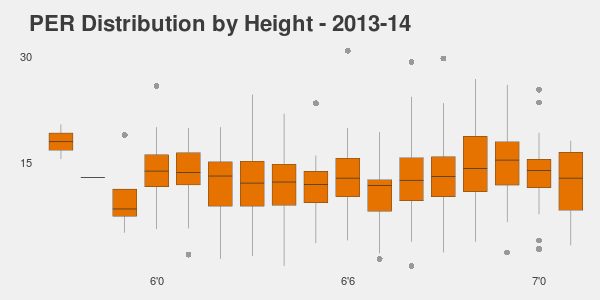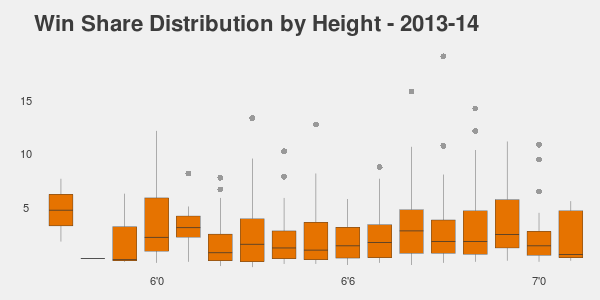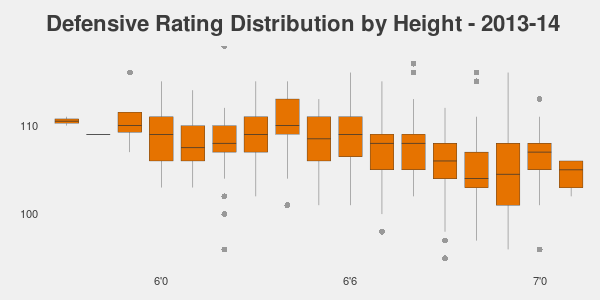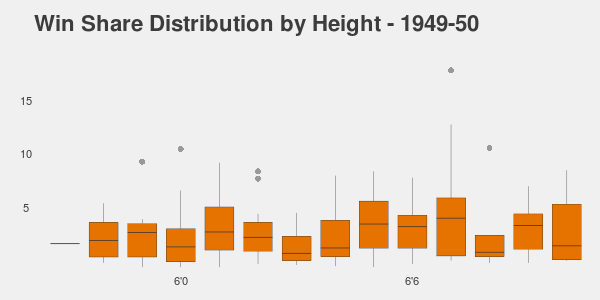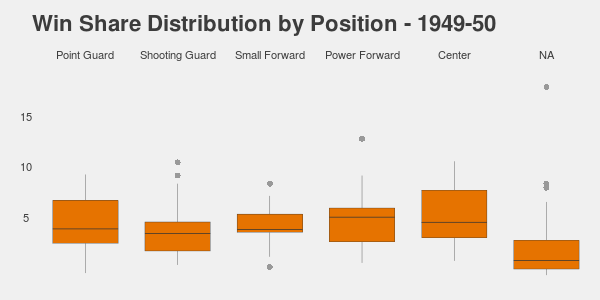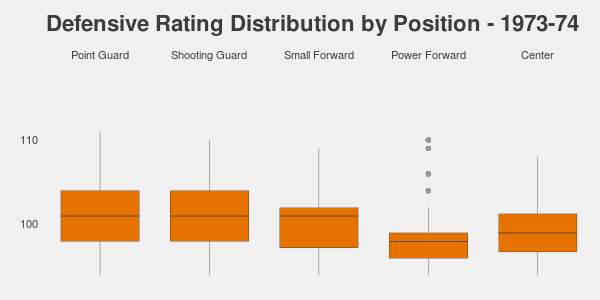Do we overvalue height in basketball?
A look into the overall basketball contributions of NBA players with regards to height.
Preface
The other day, I started a multi-part post regarding height and its relationship to the League with an exploritory look into the changes in height over time with the ultimate goal of answering: How much is it worth to be tall?
While I won't hit that just yet, I will quickly run through the basketball contribution differences with regards to height.
Research
I only looked at PER, Win Shares, and Defensive Rating as those are common metrics to compare players, and despite their individual weaknesses 1, they are readily available and cover a wide spectrum of a player's ability. 2
Note: The plots in this article may exclude some outliers in the hopes of making these plots more consumable and excluded seasons are due to a lack of data.
Taking a look at last season, here are the stat distributions:
Some observations:
- The few people that are 5'9 in the League are better than average across the board.
- Shorter and taller people do slightly better in PER and WS than those in the middle (likely due to the majority of people falling in the middle).
- Defensive ratings appear to tail off as height increases.
From a high level, we can take a look at the the distribution of these stats by height over time:
Some observations:
- PER started in favor of taller players and mostly continued that trend while slowly leveling out until the 90s. In the early 90s, that trend reversed with shorter players having a higher than average PER. Currently, the shortest and tallest players tend to have higher PERs.
- Win Shares mostly follows PER with taller players generally having more until the 90s, after which the mean win shares per height seems to be fairly even across the board.
- While Defensive Rating is only available from 1973-74 onwards, it has pretty much had the same distribution throughout league history, with shorter players generally ranking better in it.
To be able to identify larger patterns, I spent a little too much time trying to bin this data in a meaningful way, but the most reasonable thing I could come up with was just binning by position (and indirectly by height 3), which mostly has the same patterns as the above distributions by height:
While none of these plots directly states the impact by position, it does give a general trend at the value of various positions over time. Most of these trends follow our general understanding of the league (e.g. Jordan and the Bulls winning championships in the bigman-lacking 90s), but also indicate some things we've come to understand from advanced analytics (e.g. there aren't many good shooting guards or wing players in general- or that they're replaceable). While we can continue to question the merit of each of these metrics, one thing that appears true is that taller players have generally contributed more on the basketball court than their shorter counterparts.
Coming up…
In my next post, I'll finally be getting around to determine how much its worth to be tall.
Source: Basketball-Reference
-
As documented here, here, here, and pretty much everywhere. ↩
-
All data is from basketball-reference.com. RAPM would have been a good metric choice here, but the lack of historic data and my time to merge in available numbers led to its exlusion from this post. ↩
-
Yes, I recognize the issues with this. ↩
